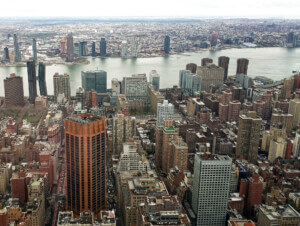In 1959, Jack Masey caused communism and capitalism to collide thanks to his kitchen design that left a bitter taste in the mouths of Nikita Khrushchev and Richard Nixon. His re-creation of a Long Island kitchen at the American National Exhibition amplified American pride and stirred up tensions between Russia and the United States during a difficult period. After 30 years working as a designer for the United States Information Agency (not a branch of the CIA), Jack Masey passed away on March 13 in Manhattan.
In a rare public meeting of the pair, things appeared to be going swimmingly until Khrushchev’s gaze fell onto Masey’s Long Island Kitchen. In what would come to be known as “The Kitchen Debate” the world leaders clashed in a bitter exchange. “You must not be afraid of ideas!” Nixon spat, only for the Russian President to smugly retort: “That’s what we’re telling you – don’t be afraid of ideas.”
Born in Brooklyn in 1924, Masey worked out of Manhattan for most of his life. During the Second World War, Masey was part of an elite 1,100-man unit that used visual and sound effects to impersonate larger forces. Mastering the art of deception, much of his time was spent designing inflatable rubber tanks and jeeps. “Three guys could blow up a Sherman tank in a half-hour,” he told The New York Times in 1969. “Two guys, a jeep in about 15 minutes.”
A trained architect, also studying graphic design at Yale, Masey worked with R. Buckminster Fuller and Charles and Ray Eames at numerous exhibitions where he incorporated fashion shows and art by the likes of Jackson Pollock and Willem de Kooning. With these artistic devices at his disposal, Masey was able to articulate the flamboyant image of the American proletariat, just as the Information Agency wanted. Mundane appliances such as washing machines, dryers and electric ranges flaunted the fruits of capitalism. Ford car designs, films, Pepsi, Levi jeans, hairstyles, and even a mechanical talking chicken all featured as Masey told the world what the Soviet Union was missing out on.
The concept of a World’s Fair today seems unnecessary and outdated. During the Cold War, when the world was a lot bigger, Expos informed the public of how others lived. For Expo ’67 in Montreal, Masey filled Buckminster Fuller’s iconic geodesic “biosphere” with space technology and the arts. Two years later, America landed on the Moon.
One wonders what Masey thought of all this glorified attention seeking. In a interview with the Guardian in 2008, he colloquially described work for the Information Agency laid out on his desk as “the whole shebang,” reflecting a laid-back attitude.
An exhibition of his work, “Make-Believe America: U.S. Cultural Exhibitions in the Cold War,” is on view now at the Museum of Design Atlanta.










